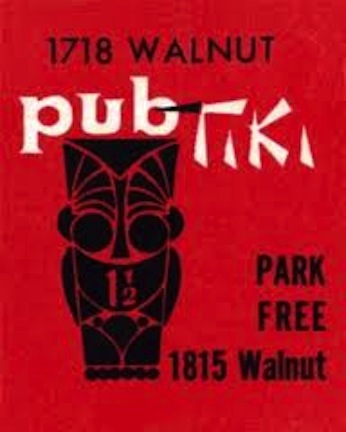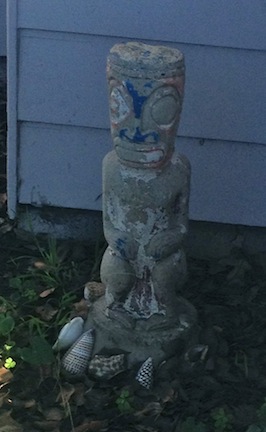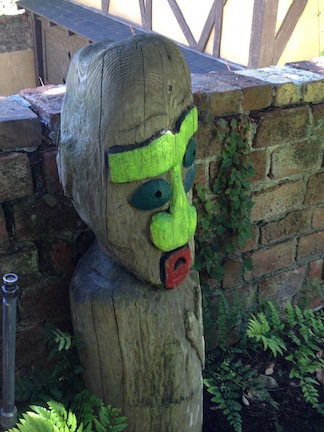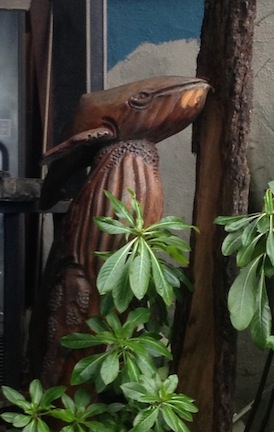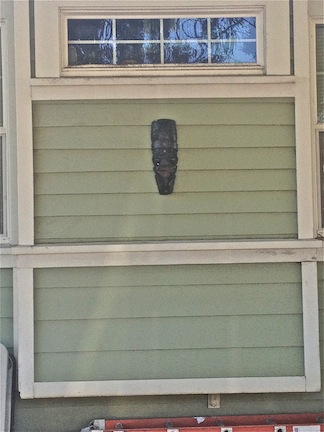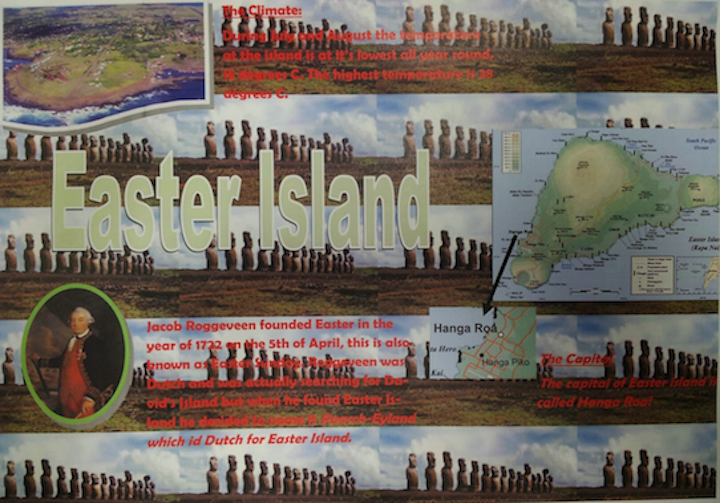I have a special place in my heart for the 1950s. There was a lot more going on in the 50s than we think. Somebody could/should write a book about the disruptive 1950s.
One thing that was going on – Tiki.
Tiki in the 1950s referred to fanciful design that drew upon Polynesian themes. Tiki originally meant simply a large wooden image of Tiki, the creator and first created being of the Maori and Polynesian peoples. Unbeknownst to the languages of the Pacific Islands, Tiki came in the United States to mean “of, pertaining to, or in the style of the tropical islands of the South Pacific.” Thanks OED.
Tiki in the second, stylist sense proliferated first in California and then the Other 47. It featured stone tiki figures, lava rock, bamboo, shells and coconut husks as decorative features, palm trees, synthetic thatch roofs, sharply peaked roofs, and waterfalls. Polynesia and the south Pacific islands had long been exoticized in our collective imagination. In the 1930s, two Tiki elders in California, Don the Beachcomber in southern California and Trader Vic in northern California, opened Polynesian-themed restaurants. Soldiers returning to the United States after serving in the South Pacific had seen the style in its indigenous setting, and James Michener’s Tales of the South Pacific and Thor Heyerdahl’s Kon-Tiki fueled the fascination with things Polynesian.
Berkeley had one Tiki joint until recently, none now, but others could be and can be found in Alameda and Oakland. Like anything else interested, Tiki culture got absorbed into mainstream culture as its edge faded. There has lately been a Tiki revival, but revivals tend not to interest me.
When I was young, my family hardly ate out at all. I do remember one dinner out, at Pub Tiki in downtown Philadelphia. I was a picky eater. The pineapple tasted weird. The rice wasn’t like at home with butter. I did not enjoy myself.
Scattered around Berkeley are examples of Tiki in the original sense of the creator/first-created, less so in the secondary style sense. It is possible that some reflect inward and spiritual embraces of Pacific Island indigenous religions, but I doubt it. I think that they are simply whimsical, quirky, and not vestigial of the 1950s craze. For music, I’d go with Dick Dale or the Ventures. I know that I am conflating the 1950s with the 1960s and Polynesian with surfing, but what else? (Answer: Martin Denny’s “Quiet Village,” which you probably don’t know).
Now for Berkeley Tiki – or, at least, what I think is Tiki. It is not unlikely that I might miss on some of this and see Tiki where no Tiki exists. Where is Joseph Campbell when I really need him? (Answer: dead). Here goes:
I am not sure that this man on Oxford is a Tiki man. Actually, I am pretty sure he is not. I think he came from northern England – so, that would mean not Tiki. But I include him. Because he sort of fits.
And there is the Rapa Nui Apartment building, a name nodding to Easter Island, which isn’t exactly Tiki but – close, no?




 Wow! What a great bunch of Tiki!
Wow! What a great bunch of Tiki!
When he heard the Dick Dale that I linked to, my friend got out his guitar and started sounding out “Misirlou” as he sipped a Mai Tai and remembered his days hanging out at the Sneaky Tiki bar at 14572 East 14th Street, San Leandro.. He claims he met and drank with Victor Bergeron, who founded Trader Vic’s.
I never know whether to believe these stories about famous people he knew. I pried him away to ask about the Tiki pictures. He gave me two thumbs up. He really liked them:






